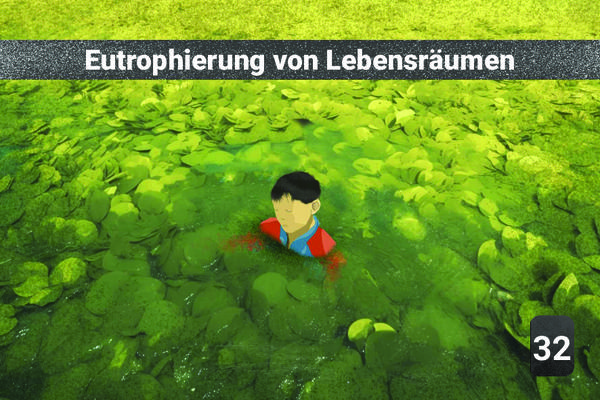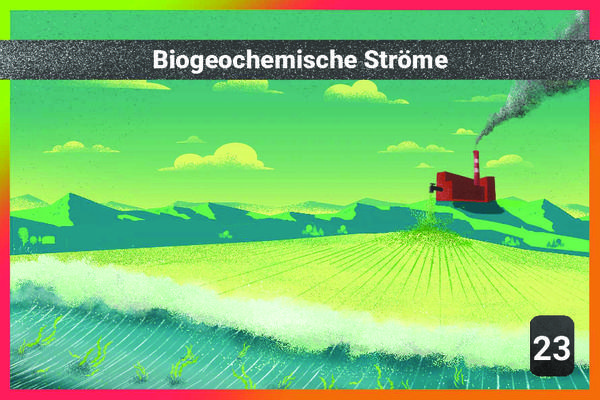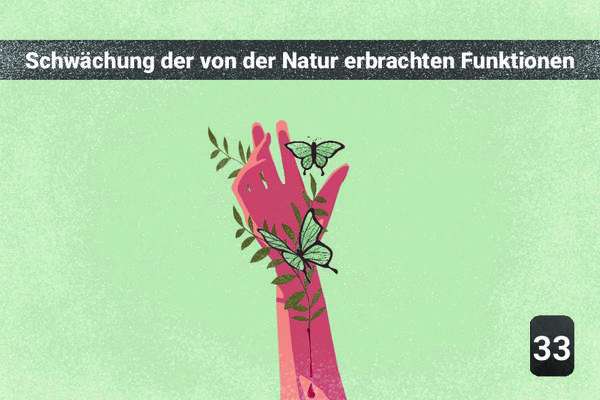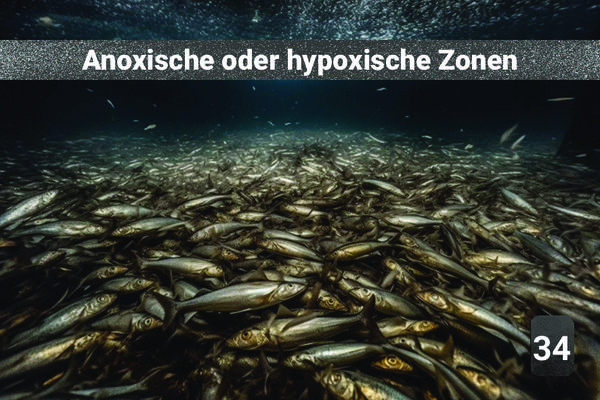32 - Environment eutrophication

✏️ Diese Erklärung ist in deiner Sprache noch nicht verfügbar, Hier klicken um deine Übersetzung vorzuschlagen oder schreibe eine E-Mail an fdn.memo@marc-antoinea.fr.
“Le Réveilleur video on eutrophication: https://www.youtube.com/watch?v=uGp3FuQnQWU Eutrophication is well known in France through the phenomenon of green algae (particularly in Brittany)."
1Ursache
The increase in the concentration of nutrients in an aquatic environment leads to a phenomenon called eutrophication. This is particularly the case with nitrogen and phosphorus, particularly following the use of nitrogen and phosphate fertilizers.
2Auswirkungen
Eutrophication has an impact on ecosystem services, disrupting the equilibrium of aquatic ecosystems - particularly lakes, rivers and coastal zones - due to an excess of nutrients, mainly nitrogen and phosphorus. These nutrients, often derived from agricultural fertilizers, wastewater or industrial discharges, lead to a series of consequences that affect the benefits these ecosystems provide to humans. Here's an example via the degradation of water quality: algal blooms, sometimes toxic (e.g.: cyanobacteria), make water unfit for consumption, irrigation or recreation (swimming, tourism). This affects regulatory services (water purification) and cultural services (recreational or aesthetic value).
"Eutrophication of aquatic environments is characterized by excessive growth of plants and algae due to the high availability of nutrients. The algae that thrive on these nutrients absorb large amounts of oxygen when they die and Their proliferation causes the impoverishment and then the death of the present aquatic ecosystem: it no longer benefits from the oxygen necessary to live, this phenomenon is called “asphyxiation of aquatic ecosystems”. In 2003, a UN report estimated the number of dead zones in the oceans at 150; five years later, a study published by the Virginia Institute of Marine Sciences counted more than 400. Spread over 245,000 km2, these are mainly found in the South Pacific, the Baltic Sea, the coasts of Namibia or even in the Gulf of Mexico. In these regions, many species cannot survive. According to the IPCC, deoxygenation could lead to a loss of 15% of the global biomass of marine animals by 2100.



